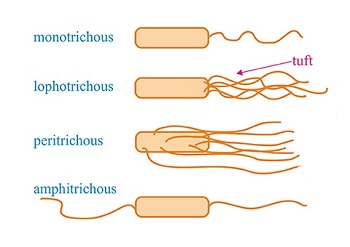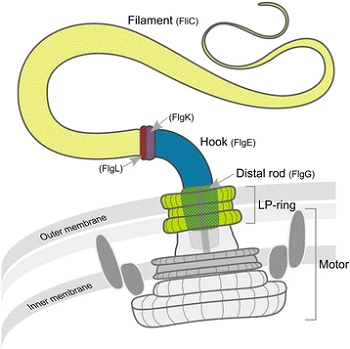Wet Mount Motility Test - Introduction, Principle, Procedure, Result, Limitation
Introduction to Wet Mount Motility Test
The wet mount motility test is a simple method used to determine the motility of the test organism and is used in the identification process since most gram-negative bacteria are motile. It is a very quick method. In addition, the microbial cells' arrangement and shape can also be determined.
There are other simple motility tests such as the hanging drop method and the culture method.
Motility of Wet Mount Motility Test
Motility is the ability of any microorganism to move from one place to another by especially the means of propeller-like flagella or by special fibrils (twitching motility) or gliding form of motility. These flagella are thread-like locomotor appendages that extend from the plasma membrane and cell wall.
Depending upon the genera and species of the organisms, an organism can possess single flagella named monotrichous or multiple flagella i.e. lophotrichous, peritrichous, amphitrichous.

Fig: Bacterial flagella configuration (Source: Wikipedia)
The presence of flagella is a chief characteristic of any organism as it is an important taxonomic tool. Although flagella are mostly present in bacilli, some species of cocci are also flagellated.

Fig: Bacterial flagella in gram-negative (Source: Wikipedia)
Principle of Wet Mount Motility Test
In Wet Mount Motility Test, a few loops full of freshly cultured test organisms are placed on a clean grease frees slide and covered with a cover slip. It is then viewed under a microscope for motility.
However, false positives can occur due to Brownian movement which is a vibratory movement caused by invisible molecules clashing with the bacteria and displacing it for a short distance. It can be differentiated by the distance traveled by the bacteria. True motility takes place over a long distance while the Brownian movement is a short distance.

Fig: wet mount motility test procedure (Source: Lab test guide)
Procedure of Wet Mount Motility Test
The procedure of the Wet Mount Motility Test is as follows:
Take 4-5 loopful of the freshly cultured test organism and place them on the center of a clean, grease-free slide.
Place a glass slide on the drop to cover it and gently press it with the help of forceps
Observe under microscope
Result of Wet Mount Motility Test
Motile organisms are seen moving long distances while non-motile organisms stay in a particular place when viewed after Wet Mount Motility Test.
Limitation of Wet Mount Motility Test
The major limitations of the Wet Mount Motility Test include:
False positives can occur due to the Brownian movement
The slide quickly dries out leaving the microorganisms immotile.
As live microorganism is used, there is a risk of infection, contamination of laboratory staff, and even escape of pathogens from the laboratory